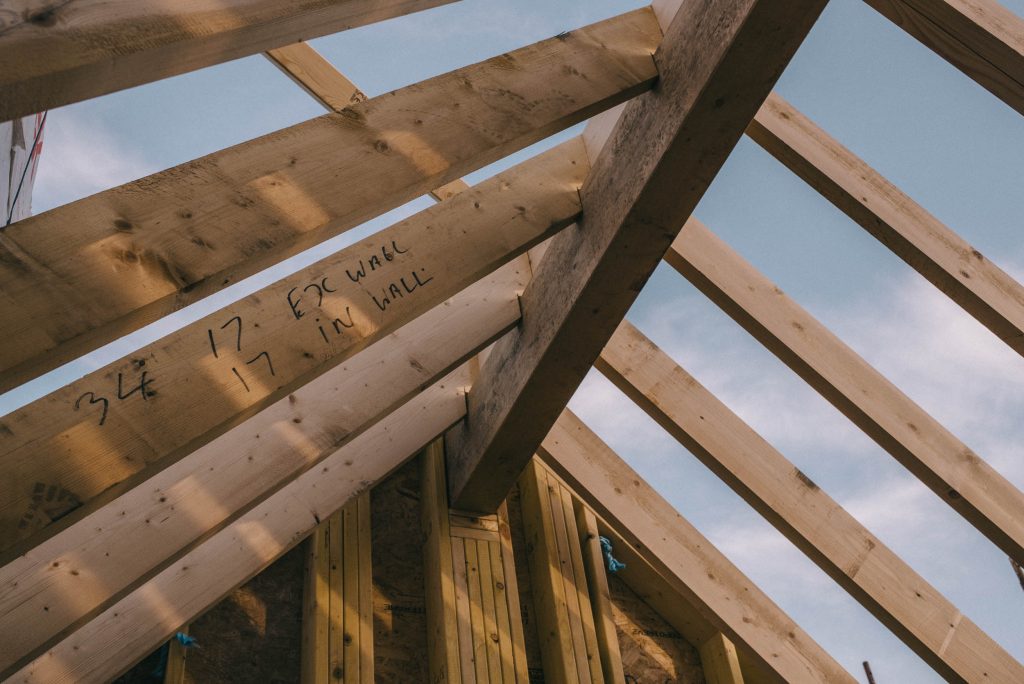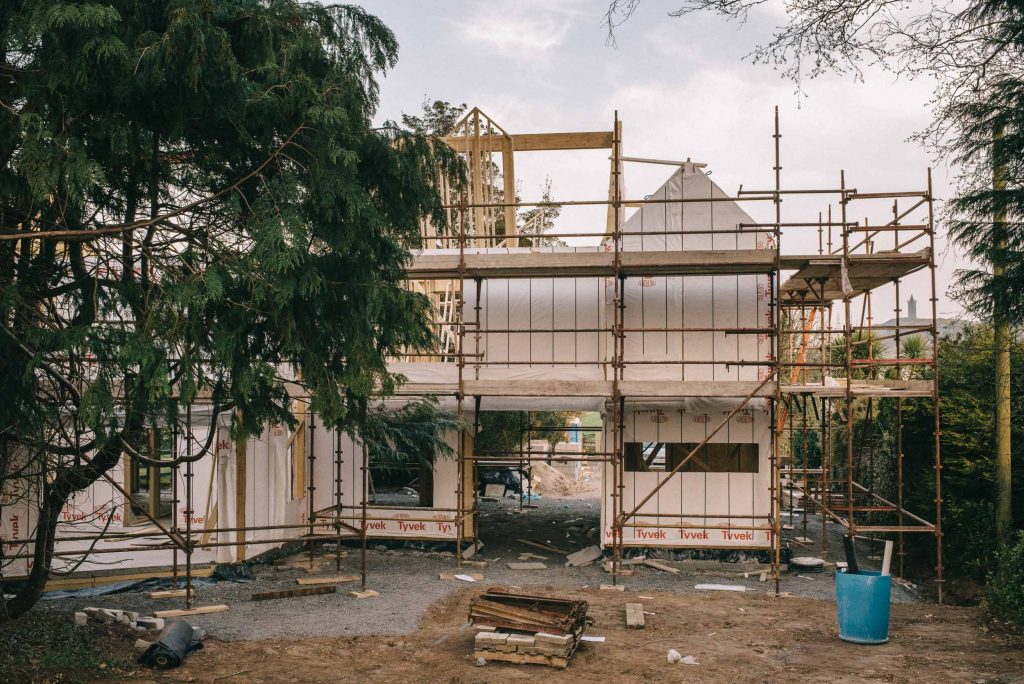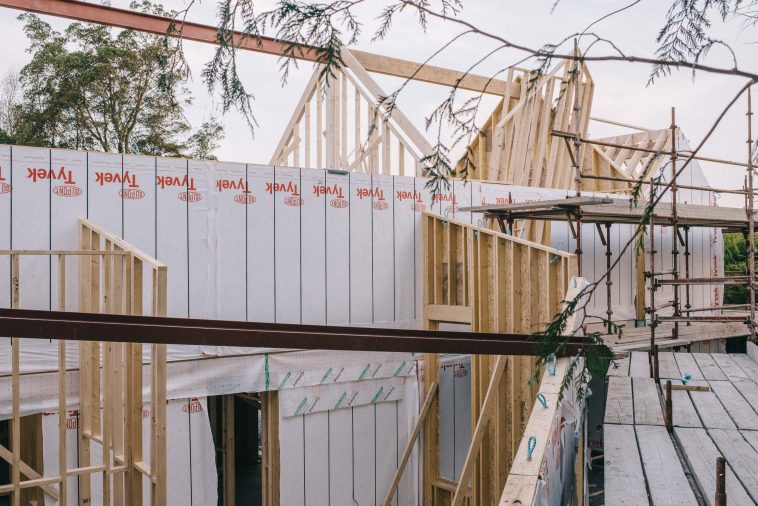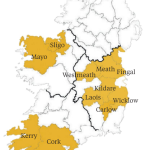Find out what you need to know about roofing if you are building a timber frame house.
In this article we cover:
- Roofing types
- How to get the spans you need
- Weighing your options
- Standards to check for
- Structural Insulated Panels
Prefabricated roof trusses, also known as trussed rafters, are the most common solution for the roofs of timber frame buildings. Many timber frame manufacturers will supply them as part of the timber frame kit.
The trussed rafters can be made in a number of forms to suit the roof loads, the clear span between supports and the shape of any rooms to be included in or partially in the roof space.
They will usually be designed to span across the external walls, allowing the use of non-loadbearing internal walls. The timber members are jointed using toothed steel plate connectors which are pressed into the timber by machine and the timber used is usually strength grade TR26.
[adrotate banner="58"]Various truss configurations are possible, including attic trusses which will provide space for attic rooms, scissors trusses which give sloping ceilings and raised collar trusses which offer a flat ceiling at a higher level than the walls.

A cut roof construction would be fairly unusual in a timber frame building but may be used if the conditions demand it. This is the traditional way of building a roof using rafters, ridge boards, collar ties, hangers, ceiling joists and binders. The rafters cannot always achieve the roof spans required in larger modern homes so they need to be supported, usually at mid-span, by heavier timbers known as purlins. The purlins in turn, may not economically achieve the spans required of them, so steel beams are often used in their place. Box beams (see below) are another option.
Ceiling joists prevent the roof loads from spreading the tops of the walls outwards, but only if they are fixed across the wall plates at the heads of the walls. If they are raised up to be fixed to the pairs of rafters, the rafter will then need to be stiff enough so as not to deflect under load.
Hipped roofs are roofs which slope up from all the external walls so that there are no gable walls. They will require hip rafters where the diminishing rafters, known as ‘jack rafters’ meet at the external corners. Hip rafters will be heavier and deeper than the ordinary rafters to allow for the angle of cut of the jack rafters.
Valley rafters are used at sloping valleys where two roofs meet and will be sized to take the increased loads and angled cuts of the rafters meeting them.
The box beam was a once popular solution for long span beams and today could be considered as a low cost alternative to engineered timber and steel. Box beams are made in the workshop or factory using plywood panels fixed to each side of a framework of softwood structural timber members.

They were typically used in areas such as roof spaces or lined walls where appearance was not so important. Strong, lightweight and easy to make, they can also be insulated, but they must never be allowed to get damp or wet, unless the timber has been suitably treated for at least Use Class 2 situations and the plywood has been properly specified to comply with the requirements of EN 314 as being suitable for exterior use or in a similar environment.
Note that many suppliers sell plywood described as WBP (Weather and Boij24 l Proof) which in the past was the quality standard for exterior rated ply, but which nowadays refers to a number of different standards and doesn’t guarantee that it’s exterior grade.
Spandrel panels are used in cold roof voids to create separation between dwellings or to form the inner leaf of gable walls. They form part of the timber frame package so need to be designed and certified as fit for purpose. Since they form part of the structure above the insulation layer, they will usually only have sheathing and a breather membrane on their outer face next to the cavity and will have no insulation or inner lining fitted. In addition to the usual requirements of structural stability, they may form part of a wall between dwellings so also need to comply with the regulations for fire safety and acoustic transfer.

Structural Insulated Panels or SIPs, as seen earlier, are capable of clear spans up to about 4.80 metres (depending on the manufacturer).
That means they can be used as roof panels which in some cases don’t need traditional rafters or roof trusses, but simply sit on ridge beams and purlins where necessary.
They do need to be kept as dry as possible during construction and should be made weathertight as soon as possible. The usual buildup for a SIPs type roof is slates, tiles or metal roof cladding on a breathable roofing membrane, on sheathing board, on vertical battens giving a 50mm clear airspace between them.
The battens are fixed over a bottom layer of breathable roofing membrane which provides additional protection to the SIPs layer. Note that due to the difficulty in applying an effective air and vapour control layer (AVCL) to the warm side of a SIPs panel to prevent water vapour entering the panel, and the risk of trapping moisture in the panels during the construction period, SIPs panels are not regarded as suitable for warm flat roof construction.




